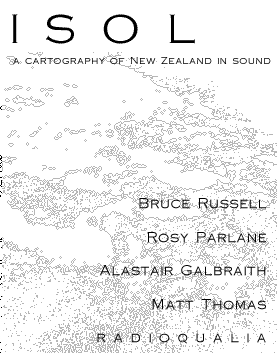

New Zealand (Aotearoa) - an island nation in the South Pacific. A remote land, it lies more than 1,000 miles (1,600 kilometres) southeast of Australia, its nearest neighbour. The country comprises two main islands - the North and South islands-and a number of small islands, some of them hundreds of miles from the main group. Because of its numerous harbours and fjords, the country has an extremely long coastline relative to its area.
The country's isolation has played an important part in its development.
New Zealand's climate is determined by its latitude, its isolation, and its physical characteristics. Across such vast oceans as surround it, weather from elsewhere has little influence. The islands' prolonged isolation has encouraged the development of species unknown to the rest of the world; almost 90 percent of the indigenous plants are peculiar to the country.
A lonely word when seperated off and left floating in white space. A lost boat, its moorings cut, drifting directionless in a torpid waters.
Its a word often in used in reference to New Zealand. Its enduring isolation from the rest of the world has allowed it to evolve a distinct geographical vernacular across Deep Time. isolation has carved itself into the bedrock of the land, into the slow grind of the glacial climbs, and the exultant sweep of the coastal shores. Cut off from other landmasses by hundreds of kilometres of ocean in every direction, New Zealand was left alone to cultivate its unique biorhythm, to define its own sense of life. Quantum leap forward a few million years, and even after European colonisation 160 years ago, the machinery of the industrial revolution couldnt overcome the pervasive remoteness of living at the end of the earth.
Isolation and migration work in symbiosis. Geographical remoteness meant inhabitation was contingent on long journeys. Argonauts navigated firstly from the South Pacific, and laterly from Europe to arrive in New Zealand. In the 1920s radio began to further erode isolation, by connecting New Zealanders firstly with each other, then with their neighbours, and and finally with the world.
But the intervention of air travel, broadcasting and digital technologies does not completely nullify the impact of sheer physical distance. In an itinerant world criss-crossed by fibre-optics, copper wire and invisible latices of radio waves, isolation still causes a cultural lag. The huge watery spaces between New Zealand and the rest of the world still seem to slow down the speed of the information revolution. Isolation causes a kind of info-drag. But the distance from the super-highway, though often frustrating, can have it's advantages. Culturals fads and trends have less impact in a country where they arrive 3, 6 or even 12 months late. Indigenous phenomena can sometimes be left to incubate and evolve entirely localised peculiarities in the absence of the distraction of international influences. Consequently, experimental New Zealand music and sound art from the 1980s till the present day has developed its own evolutionary quirks entirely specific to the country. In comparitive isolation, experimental sound manifests specific auditory adaptions, distinctive sonic qualities, unique phonic mutations, and new interpretations of the pervasive themes of isolation, distance and remoteness.
Over the course of a journey lasting five transmissions, isol explores the idiosyncracies of antipodean sound, charting the vast spaces which separate people and places. isol maps the topopgraphy of New Zealands particular isolation, finding it can be sweet or sad, chaotic or sparse, euphoric or desperate. isols programmes show how communications mechanisms like radio can encumber isolation, attaching moorings to places and people. It probes how natural radio emitted by the Earth or by its surrounding planets can articulate or amplify a sense of space. It documents small journeys through prosiac locations, and longer migrations across oceans and time. isol tells its story in fragmented conversations between airbourne pilots, in the enigmatic rumblings of mountains by the sea, in far-off binary emanations from planetary phenomena, and in chaotic AM radio breakbeats. It is profoundly localised, almost colloquial, in places, vast and universal in other places. Its 5 part voyage aims to begin a sonic mapping of the New Zealands peculiar brand of isolation.
Cited from the entry "New Zealand", in the Encyclopdia Britannica [November 19, 2001].